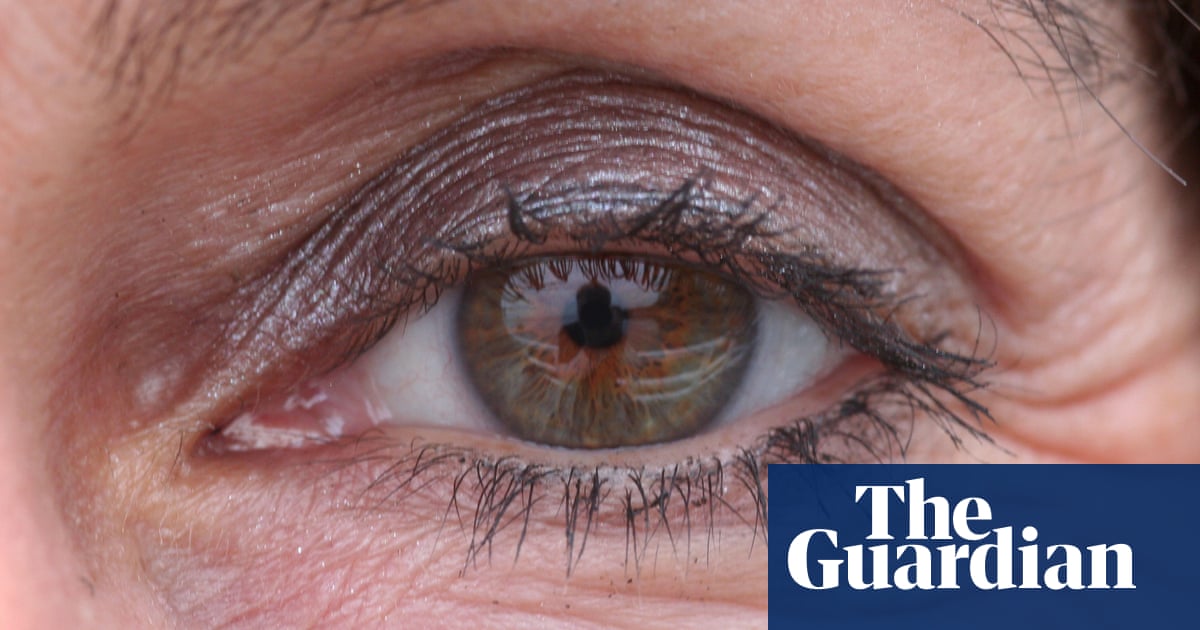Weight loss drugs could at least double the risk of diabetic patients developing age-related macular degeneration, alarge-scale studyhas found.
Originally developed for diabetes patients, glucagon-like peptide-1 receptor agonist (GLP-1 RA) medicines have transformed how obesity is treated and there is growingevidence of wider health benefits. They help reduce blood sugar levels, slow digestion and reduce appetite.
But a study by Canadian scientists published in Jama Ophthalmology has found that after six months of use GLP-1 RAs are associated with double the risk of older people with diabetes developing neovascular age-related macular degeneration compared with similar patients not taking the drugs.
Academics at the University of Toronto examined medical data for more than 1 million Ontario residents with a diagnosis of diabetes and identified 46,334 patients with an average age of 66 who were prescribed GLP-1 RAs. Nearly all (97.5%) were taking semaglutide, while 2.5% were on lixisenatide.
The study did not exclude any specific brand of drugs, but since Wegovy was only approved in Canada in November 2021, primarily for weight loss, it is likely the bulk of semaglutide users in the study were taking Ozempic, which is prescribed for diabetes.
Each patient on semaglutide or lixisenatide was matched with two patients who also had diabetes but were not taking the drugs, who shared similar characteristics such as age, gender and health conditions. The researchers then compared how many patients developed neovascular age-related macular degeneration over three years.
The study found that those who had been taking semaglutide or lixisenatide for at least six months had twice the risk of developing macular degeneration, compared with similar patients who were not taking the drugs. Patients who had been taking GLP-1 RAs for more than 30 months had more than three times the risk.
Diabetic patients who were older and/or had had a stroke had an even higher risk of developing macular degeneration if they were on these drugs, the authors found.
Marko Popovic, a co-author of the study and physician in the department of ophthalmology and vision sciences at the University of Toronto, said: “GLP-1 receptor agonists appear to have multiple effects on the eye, and in the case of neovascular age-related macular degeneration, the overall impact may be harmful.
“Based on our data, I would advise exercising particular caution when prescribing GLP-1 RAs to older [diabetic] patients or those with a history of stroke, as both groups were found to have an even higher risk of developing [the condition].”
In anaccompanying editorial, Brian VanderBeek, an associate professor of ophthalmology at the Hospital of the University of Pennsylvania, said the findings suggested that large numbers of patients could be affected.
“This suggests as many as one in 1,000 GLP-1 RA users could progress to new age-related macular degenaration over unexposed patients: if this risk was carried over millions of users, those affected could end up being a sizable group of patients,” he said.
VanderBeek said work needed to be done to determine if this only affects patients with diabetes or if those taking these drugs for weight management or other indications are similarly at risk. “While certainly not outweighing the good these medications offer, prescribing physicians need to keep in mind the real and serious ocular adverse events that may occur.”
A spokesperson for Novo Nordisk, which manufactures Ozempic and Wegovy, said: “Patient safety is our top priority and we take any report about an adverse event related to the use of our medicines very seriously. We work closely with authorities and regulatory bodies from around the world to continuously monitor the safety profile of our products.
“These medicines have been extensively examined in Novo Nordisk’s robust clinical development programs, including randomised controlled trials, which to date have not shown any observable treatment difference compared to placebo for macular degeneration or age-related macular degeneration. Therefore, Novo Nordisk does not conclude a causal relationship between GLP-1 RA use, semaglutide and age-related macular degeneration at this time.”
Dr Alison Cave, the chief safety officer of the Medicines & Healthcare products Regulatory Agency, a UK watchdog, said: “Macular degeneration is not currently listed as a potential side-effect of these medicines. However, we keep the safety of these medicines under close review, including emerging evidence from scientific publications, and will take appropriate action where necessary. On the basis of the current evidence, the benefits of GLP-1 RAs outweigh the potential risks when used for the licensed indications.”
